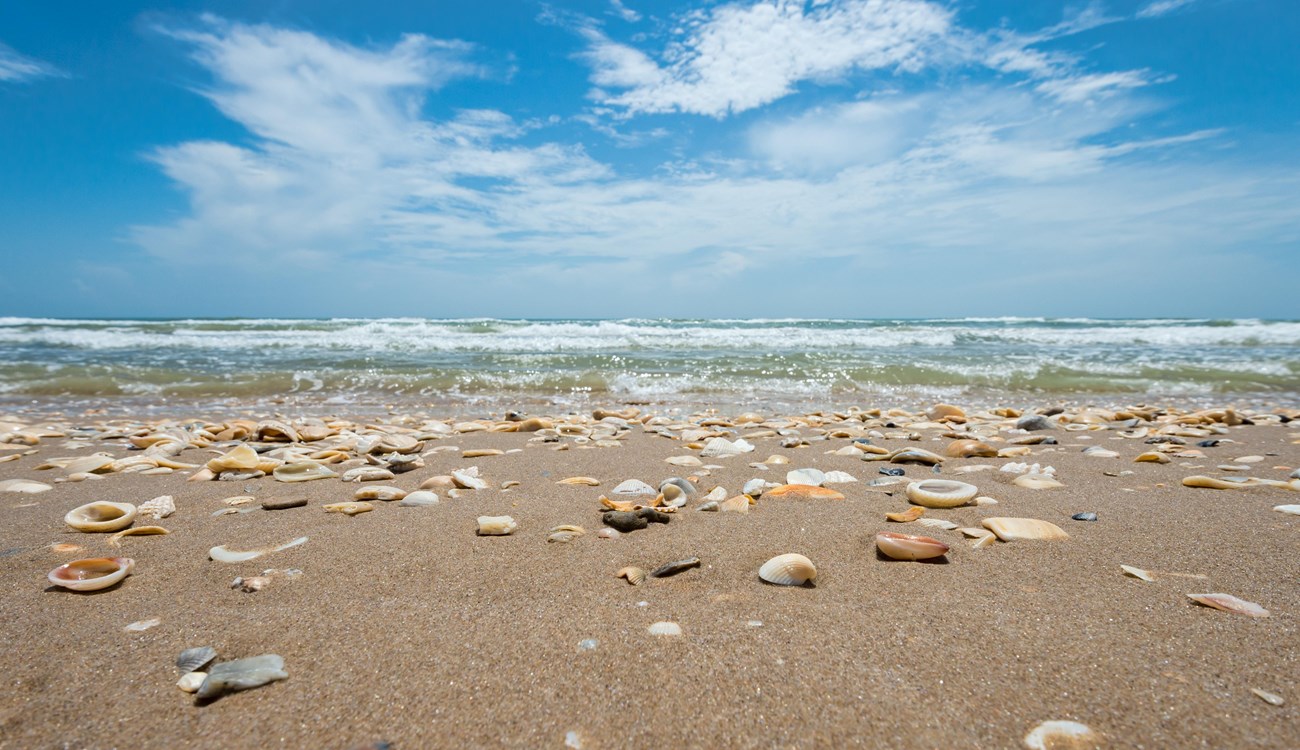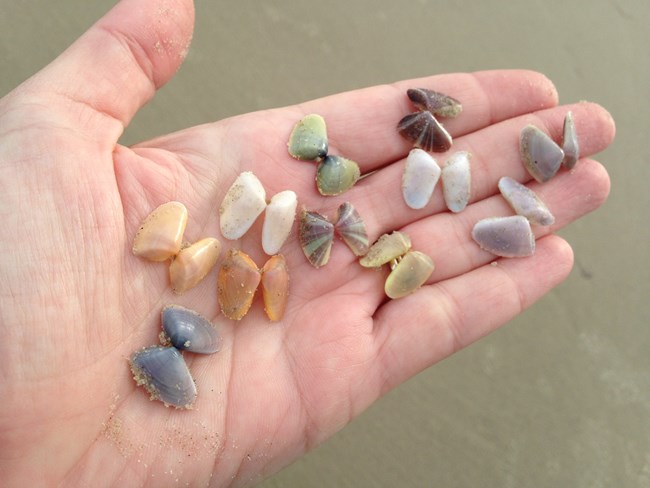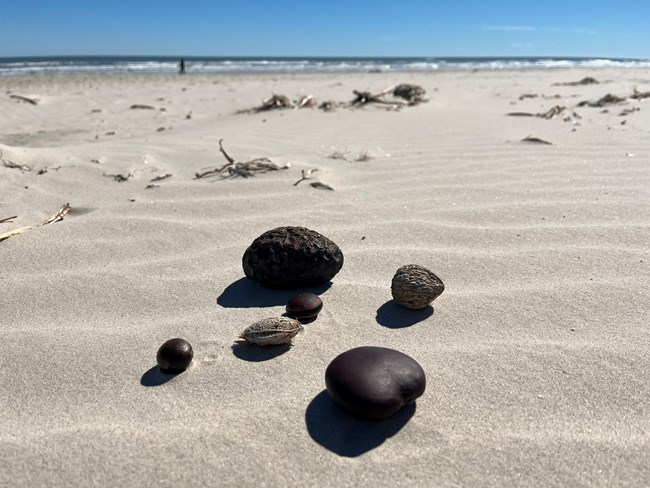
NPS Photo/ Sue Wolfe For thousands of years humans have been walking along the shorelines at the edge of the sea in search of items of interest cast up by the sea. These ocean treasures often took the form of seashells, sea beans, rocks, and other natural objects. Today, with an ever-growing problem of marine debris, the list of items washed in by the tides also includes a large amount of human-made trash. In an effort to help keep the beach clean, visitors are encouraged to take advantage of the free trash bags available at the Malaquite Visitor Center. While you may collect as much trash as you would like, there is a limit to the number of seashells and sea beans that can be collected. Natural and cultural resources are protected at the national seashore, but you are allowed to keep up to a one-gallon (3.79 liter) container filled with seashells and sea beans that you find. Commercial collecting of seashells and sea beans is prohibited. If a shell still has an animal living in it, please put it back where you found it. 
NPS Photo/ Sarah Laughlin SeashellsSeashells are the hard protective outer covering of animals such as sea snails, clams, scallops, and other types of shelled invertebrates collectively known as mollusks. After the animal living in the shell dies and decomposes, the hard outer shell made mostly of calcium carbonate is left behind where it can be washed up on to the beach. Seashells can be found anywhere along the gulf beaches and at any time of the year. Higher concentrations of shells are found after large storms and during very low tides. Places like Little Shell Beach and Big Shell Beach are popular beachcombing areas due to their higher concentration of shells. This is caused by the passing of two offshore currents that push shells and debris onto the beach. To reach Little Shell Beach and Big Shell Beach you must have a four-wheel drive vehicle to drive down South Beach — a distance of approximately 20 miles (32.2 km). 
NPS Photo/ Thomas DiGiovannangelo Sea BeansSea beans, sometimes referred to as drift seeds, are tropical nuts, seeds, and fruits that have become adapted for long-distance dispersal by water. These nuts and seeds start off by growing in areas such as the Caribbean, Yucatán Peninsula, or even South America, where they fall into streams or other bodies of water and eventually make their way to the ocean. Wind and ocean currents then transport the sea beans sometimes thousands of miles from their origins where they are washed up on to distant shores. The buoyancy that allows sea beans to travel on ocean currents also allows them to make their way high up the beach to the base of the dunes. This area, where the tide reaches its highest point on the beach, is called the wrack line. At the wrack line, organic materials such as kelp, seagrass, driftwood, and sea beans will collect. 
NPS Photo/ Mimi Gorman Marine DebrisMarine debris is created by people. Anything that is solid and made by humans can become marine debris once it is discarded, lost, or abandoned in waterways and the ocean. Some of the most common marine debris items found on beaches in the park are plastic bottles, balloons, plastic bags, fishing ropes and nets, fishing lures, and toothbrushes. Intentional or not, our everyday decisions about how we use and dispose of things can contribute to the marine debris problem. By modeling the behavior we want to see, like properly disposing of trash and avoiding single-use products, we can work together to turn the tide on marine debris. Even the smallest efforts can make a big difference. Before heading to the beach, pick up a trash bag from the visitor center. Use it to stash your own trash and then challenge yourself to fill up the bag with other trash from the beach. Hazardous ItemsHazardous items have been known to wash up on the beach from time to time. If you come across an item that you think may be hazardous or are unsure of, do not touch it. Leave the item when you found it and report it to any park ranger. Protect Cultural ResourcesThe cultural history of Padre Island includes Native American inhabitants, Spanish shipwrecks of 1554, a World War II training ground, and a booming cattle ranching industry. Evidence of these early people and time periods are scattered through the island. Federal and state laws protect these cultural resources. If you are not sure if an item is trash or may hold a historic or cultural value, leave the item where you found it. Take photos and note the location. Report your find to any park ranger. |
Last updated: February 8, 2024
